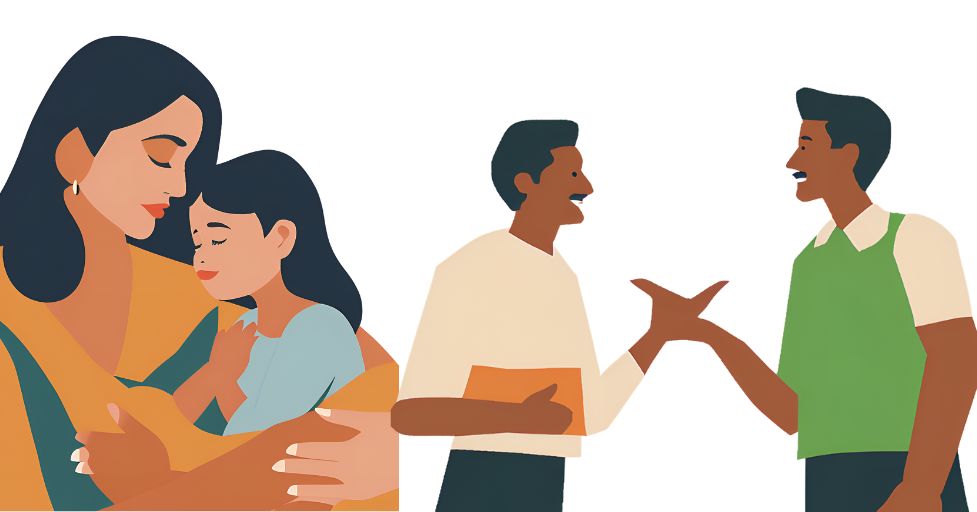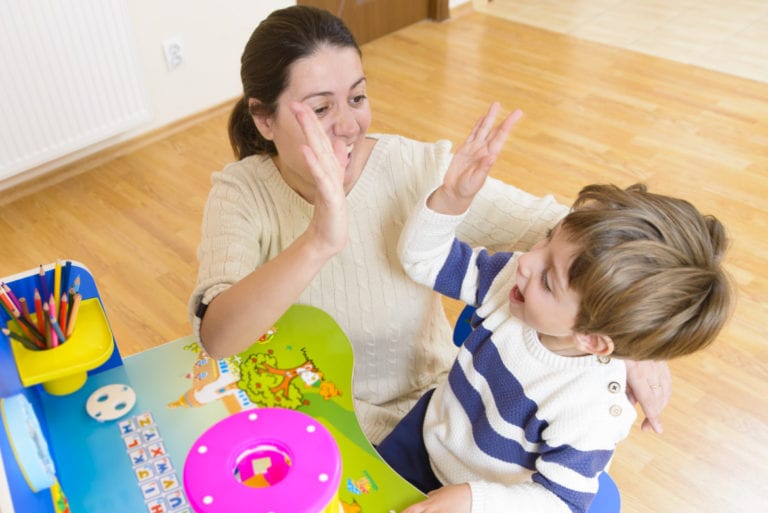7 Ways to Develop Empathy in Kids and Adults
Disclosure: This post may contain affiliate links, meaning I may get a small commission if you decide to make a purchase through my links, at no cost to you.

7 Ways to Develop Empathy in Kids and Adults
Empathy is the ability to understand and share the feelings of others. It is a crucial skill in our interconnected world. But did you know that only 30% of adults feel they’re truly empathetic?
Whether you’re a parent, teacher, or just someone looking to grow, developing empathy can transform your relationships and make you a better human being.
In this article, we’ll explore 7 ways to develop empathy in both kids and adults. Get ready to open your heart and mind! We will also explore how to teach your child empathy, and how to build empathy in yourself.
1. Practice Active Listening

Active listening is the cornerstone of empathy, allowing us to truly understand and connect with others. Let’s explore how this powerful skill can transform our relationships and boost our empathy quotient.
Define active listening and its importance in empathy
Let’s dive into the world of active listening – it’s not just hearing, folks! Active listening is like giving someone your full attention superhero-style. It’s about truly understanding what the other person is saying, both verbally and non-verbally. As a mom of four, I can tell you that mastering the skill of developing empathy in children and adults is a game-changer!
When my oldest daughter was younger, she came home and talked to me about something that happened at school that day. She would spend ten minutes telling me something that she could have said in two minutes. I would rush or tune her out.
I started to use active listening and mirroring what she said, instead of just tuning her out while she went on and on. Not only did I learn to appreciate her stories, but because she knew I was listening, she didn’t need to keep talking. It was a win-win.
Did you know that we typically remember only 25-50% of what we hear? That’s why active listening is so crucial for developing empathy. When we actively listen, we’re not just waiting for our turn to speak; we’re fully present, absorbing every word, tone, and gesture. This deep level of attention allows us to truly connect with others’ emotions and experiences.
Techniques for improving active listening skills
Ready to level up your listening game? Here are some techniques that have worked wonders for me, both as a preschool teacher and as part of a big family of 11 siblings:
- Make eye contact: Show you’re engaged by looking at the speaker. It’s amazing how much this simple act can convey!
- Use nonverbal cues: Nod, smile, or lean in slightly to show you’re following along. Body language is an important part of active listening
- Avoid interrupting: Trust me, coming from a family with 11 kids, this one’s tough! But letting others finish their thoughts is crucial.
- Ask clarifying questions: This shows you’re invested in understanding their perspective.
- Paraphrase: Repeat back what you’ve heard in your own words to ensure you’ve got it right.
Benefits of active listening in developing empathy
The benefits of active listening are truly transformative! By honing this skill, you’re opening doors to deeper connections and understanding. Here’s what you can expect:
- Enhanced emotional intelligence: You’ll become more attuned to others’ feelings and needs.
- Improved conflict resolution: Understanding all sides makes finding solutions easier.
- Stronger relationships: People feel valued when they’re truly heard.
- Increased trust: Active listening builds a foundation of mutual respect.
- Better problem-solving skills: You’ll gain more information to work with.
As someone who’s worked with young adults with special needs, I can attest that active listening is a powerful tool for fostering inclusion and understanding diverse perspectives.
2. Engage in Perspective-Taking Exercises

Stepping into someone else’s shoes isn’t just a figure of speech – it’s a crucial skill to show empathy. These perspective-taking exercises will help both kids and adults see the world through different eyes. When I would learn about how to teach empathy to my students as a preschool teacher, the students and I would practice perspective-taking to help teach empathy to children. Let’s talk about these empathy activities for children and adults.
Explanation of perspective-taking and its role in empathy
Perspective-taking is like trying on someone else’s shoes – emotionally speaking, of course! It’s the ability to see situations from another person’s point of view. This skill is absolutely essential for developing empathy. After all, how can we truly understand others if we can’t imagine ourselves in their position?
A fascinating study found that people who regularly practice perspective-taking are more likely to engage in prosocial behaviors. In other words, they’re more likely to help others and act compassionately. How cool is that?
Examples of perspective-taking exercises to teach kids empathy
As a mom and former preschool teacher, I’ve found these exercises to be fantastic for teaching empathy to children:
- Role-playing scenarios: Act out different situations and switch roles.
- “Walk in their shoes” discussions: Talk about how characters in books or movies might feel.
- Emotion guessing game: Show pictures of facial expressions and guess the emotions.
- “What would you do?” stories: Present scenarios and ask kids how they’d respond if they were different characters.
- Puppet play: Use puppets to explore different perspectives in everyday situations.
These activities not only help in teaching kids empathy but also make for great family bonding time!
Advanced perspective-taking activities for adults

Don’t worry, grown-ups – we’ve got some empathy-boosting exercises for how to develop empathy for you too! Here are some that I’ve found particularly effective:
- Empathy mapping: Create visual representations of others’ thoughts, feelings, and motivations.
- Reverse debate: Argue for a position opposite to your own beliefs.
- Cultural immersion: Engage with cultures different from your own through food, music, or events.
- “Day in the life” journaling: Imagine and write about a day in someone else’s life. What could they be suffering? What challenges could they struggle with?
- Perspective interviews: Talk to people with different life experiences and really listen to their stories.
As the oldest daughter (3rd child) in a large family, I can tell you that these exercises have been invaluable in navigating complex family dynamics and fostering understanding among siblings.
I know that our families are supposed to stay together through thick and thin right? Family member squabbles can ruin relationships with other family members. It has been invaluable for me to find and understand where each one of my siblings is coming from.
Remember, these 7 Ways to Develop Empathy in Kids and Adults is a journey, not a destination. It takes practice and patience, but the rewards are immeasurable. By mastering active listening and engaging in perspective-taking exercises, you’re not just improving your own emotional intelligence – you’re contributing to a more compassionate world. So, are you ready to flex those empathy muscles? Let’s move on to getting our emotional groove on.
3. Read Fiction and Watch Emotional Movies

If you want to know how to teach empathy to children, stories have the incredible power to to just that. Stories transport us into other lives and experiences. Have you ever been so lost in a good story or movie that you were completely unaware of what was going on around you?
Reading books and watching powerful movies It is a powerful way to really feel the characters emotions, point of view, and seeing the world through their eyes. Discover how diving into fiction and films can be a fun and effective way to cultivate empathy. This is how to build empathy in students, kids, and adults.
How fiction and films can foster empathy
Grab your popcorn and tissues, folks! It’s time to dive into the world of fiction and films – and no, it’s not just for entertainment. Did you know that reading fiction can actually increase your empathy?
It’s true! A study published in the journal Science found that people who read literary fiction performed better on tests measuring empathy, social perception, and emotional intelligence. How cool is that?

My favorite example of this is the book by Harper Lee “To Kill a Mockingbird”. I love the lessons in this book! There are tons of examples in this book of empathy, but my favorite is Boo Radley, a reclusive neighbor, who Scout and her brother Jem initially perceive as a frightening figure.
However, as the story progresses, they come to understand Boo’s actions and his kindness, especially when he saves them from danger. Their evolving perception of Boo highlights the theme of empathy—moving from fear and misunderstanding to compassion and appreciation.
In the book To Kill a Mockingbird, Atticus Finch, the dad of Scout and Jem, consistently teaches his children about empathy. He advises Scout to “climb into another person’s skin and walk around in it” to understand them better.
As a mom of four book-loving kiddos, I’ve seen firsthand how stories can open up new worlds and perspectives. When we immerse ourselves in a character’s thoughts and feelings, we practice empathy in a safe, controlled environment. It’s like a gym for our emotional muscles!
Book recommendations for different age groups
Let’s break down some empathy-boosting reads for every age:
For the little ones (ages 3-7):
- “The Invisible Boy” by Trudy Ludwig
- “Hey, Little Ant” by Phillip and Hannah Hoose
- “Last Stop on Market Street” by Matt de la Peña
For the middle graders (ages 8-12):
- “Wonder” by R.J. Palacio
- “Fish in a Tree” by Lynda Mullaly Hunt
- “The One and Only Ivan” by Katherine Applegate
For teens and adults:
- “To Kill a Mockingbird” by Harper Lee
- “The Hate U Give” by Angie Thomas
- “The Curious Incident of the Dog in the Night-Time” by Mark Haddon
As someone who’s taught young adults with special needs, I’ve found that books featuring diverse characters and experiences can be particularly powerful in fostering empathy and understanding.
Discussion on the impact of storytelling on emotional intelligence
Storytelling isn’t just an art – it’s a powerful tool for developing emotional intelligence. When we engage with stories, we’re exercising our ability to understand and manage emotions, both our own and others. It’s like a workout for our EQ!
Through storytelling, we:
- Practice perspective-taking
- Explore complex emotions in a safe space
- Develop our ability to recognize and name emotions
- Learn about different cultures and experiences
- Reflect on our own beliefs and biases
As the third child of 11, I can tell you that family storytelling time was not just entertaining – it was a crash course in emotional intelligence! I don’t always know the challenges that my siblings face on a day to day basis. I went to lunch with one of my sisters’s recently and just asked her to tell me about the challenges she is facing on any given day.
She told me the problems that one of her kids was having in school. Her decision to home school her kids and how she was going to do it. I had know ideas that she was going to start home schooling her kids and why, but listening to her story – everything made perfect sense to me.
4. Volunteer and Engage in Community Service

Rolling up our sleeves and helping others isn’t just good for the community – it’s a powerful empathy booster. Let’s explore how giving back can open our hearts and minds to others’ experiences.
The connection between volunteering and empathy development
Roll up your sleeves, because we’re about to talk about the empathy-boosting power of volunteering! Here’s a mind-blowing fact: studies have shown that volunteering can actually activate the same parts of the brain associated with empathy and social connection. It’s like a two-for-one deal – you’re helping others while literally rewiring your brain to be more empathetic!
From my experience teaching preschool, I’ve seen how even the smallest acts of service can spark empathy in young children. It’s amazing to watch their little faces light up when they realize they’ve made a difference in someone else’s life.
Age-appropriate volunteering opportunities for kids
Getting kids involved in community service doesn’t have to be complicated. Here are some ideas that have worked well for my family:
- For younger kids (ages 3-7):
- Helping to sort donations at a food bank
- Participating in neighborhood clean-up days
- Making cards for seniors or hospital patients
- For older kids (ages 8-12):
- Reading to younger children at the library
- Helping at animal shelters
- Organizing a clothing or toy drive
- For teens:
- Tutoring younger students
- Volunteering at a soup kitchen
- Participating in habitat restoration projects
Remember, the key is to make it fun and meaningful. When kids see the direct impact of their actions, it really drives home the importance of empathy and compassion.
How adults can incorporate community service into their lives
Alright, grown-ups, it’s our turn! I know, I know – between work, family, and trying to maintain some semblance of a social life, finding time for volunteering can seem impossible. But trust me, it’s worth it! Here are some ways to squeeze in some empathy-boosting service:
- Skills-based volunteering: Use your professional skills to help non-profits. It’s a win-win!
- Virtual volunteering: Many organizations offer online opportunities that you can do from home.
- Family volunteering: Make it a family affair! It’s a great way to bond and teach empathy.
- Micro-volunteering: Look for small, one-time opportunities that fit into your schedule.
- Workplace volunteering: See if your company offers volunteer days or programs.
As a wife and mom, I’ve found that involving the whole family in community service not only helps others but also strengthens our bonds and teaches valuable life lessons.
Remember, developing empathy through volunteering isn’t about grand gestures – it’s about consistent, meaningful actions. Whether you’re reading a heartwarming story to your kids or spending an hour at a local food bank, you’re nurturing empathy and making the world a little bit better. So, what’s your next empathy-building adventure going to be?
5. Practice Mindfulness and Self-Reflection

The journey to empathy starts within. By developing self-awareness and practicing mindfulness, we can better understand our own emotions and, in turn, connect more deeply with others.
The role of self-awareness in developing empathy
Buckle up, folks! We’re about to take a journey inward. Did you know that self-awareness is like the secret sauce of empathy? It’s true! Research shows that people with higher levels of self-awareness are more likely to demonstrate empathy towards others. Mind-blowing, right?
As a mom of four, I’ve learned that understanding my own emotions is crucial to understanding my kids’. It’s like putting on your own oxygen mask first – you can’t help others if you’re not tuned in to yourself. Self-awareness allows us to recognize our biases, understand our emotional triggers, and ultimately, relate better to others’ experiences.
Mindfulness exercises for children
Let’s get those little minds zen! Here are some kid-friendly mindfulness exercises that have worked wonders in my preschool classroom:
- Breathing buddies: Have kids lie down with a stuffed animal on their belly. As they breathe, they watch their “buddy” rise and fall.
- Mindful eating: Turn snack time into a sensory experience. Ask kids to describe the color, smell, and taste of their food.
- Feelings weather report: Encourage kids to describe their emotions as if they were weather. “I’m feeling sunny with a chance of grumpy clouds!”
- Gratitude jar: Fill a jar with notes about things they’re thankful for.
- Body scan: Guide kids through a relaxing head-to-toe body awareness exercise.
These exercises not only promote mindfulness but also lay the groundwork for emotional intelligence and empathy.
Advanced self-reflection techniques for adults
Alright, grown-ups, it’s our turn to dive deep! Here are some powerful self-reflection techniques to boost your empathy:
- Journaling: Write about your experiences, emotions, and reactions to daily events.
- Meditation: Practice observing your thoughts without judgment.
- Emotional mapping: Create visual representations of your emotional patterns.
- Values clarification: Regularly reassess and reflect on your core values.
- Cognitive restructuring: Challenge and reframe negative thought patterns.
As the third child of 11, I’ve found these techniques invaluable in navigating complex family dynamics and understanding different perspectives.
Related:
51 Gratitude Journaling Prompts
6. Encourage and Participate in Open Discussions

Creating space for honest, open dialogue is crucial for fostering empathy. Let’s dive into how we can facilitate meaningful conversations that build understanding and compassion.
The importance of creating safe spaces for emotional expression
Let’s talk about talk! Creating safe spaces for open discussion is like building an emotional greenhouse where empathy can flourish. In fact, a study by the Harvard Graduate School of Education found that children who regularly engage in meaningful conversations about emotions show higher levels of empathy and social competence.
In my experience teaching young adults with special needs, I’ve seen firsthand how crucial these safe spaces are. When people feel heard and validated, they’re more likely to extend that same courtesy to others. It’s a beautiful cycle of empathy!
Related:
Tips for facilitating empathetic conversations with children
Ready to get those little chatterboxes going? Here are some tips for nurturing empathetic conversations with kids:
- Use open-ended questions: “How do you think that made your friend feel?”
- Validate emotions: “It’s okay to feel angry. Let’s talk about why.”
- Practice active listening: Show you’re engaged by repeating back what they’ve said.
- Use storytelling: Share personal anecdotes to illustrate empathy in action.
- Create a “feelings vocabulary”: Help kids name and understand different emotions.
As a mom of four, I’ve found that making dinner or hanging out in the kitchen is a great opportunity for these heart-to-heart chats. There’s something about the the kitchen and food that opens up those emotional floodgates!
Strategies for adults to engage in vulnerable and open dialogue
Alright, time for some grown-up talk! Here are strategies to help adults dive into those deep, empathy-building conversations:
- Practice vulnerability: Share your own experiences and emotions first.
- Use “I” statements: Express your feelings without blaming or accusing.
- Embrace silence: Allow for pauses in conversation. Sometimes, the most important things are said in the quiet moments.
- Ask curious questions: Show genuine interest in others’ perspectives.
- Avoid judgment: Create a non-judgmental atmosphere where all feelings are valid.
Being part of a large family of 11 siblings, I’ve learned that these strategies are essential for maintaining strong, empathetic relationships, even when opinions differ.
Remember, fostering empathy through mindfulness and open discussion isn’t a one-time thing – it’s an ongoing practice. Whether you’re teaching a child to name their emotions or engaging in a vulnerable conversation with a friend, you’re building a more empathetic world, one interaction at a time. So, are you ready to flex those empathy muscles and start some heart-to-heart conversations?
7. Use Role-Playing and Empathy-Building Games

Who said developing empathy can’t be fun? Role-playing and empathy-building games offer an engaging way to practice understanding others’ perspectives. Let’s explore some playful approaches to serious empathy development.
Benefits of role-playing in developing empathy
Lights, camera, empathy! Role-playing isn’t just for aspiring actors or tabletop gamers – it’s a powerful tool for boosting emotional intelligence and empathy. Here’s a mind-blowing fact: studies have shown that engaging in role-play activities can increase empathy levels by up to 20%! That’s like giving your empathy muscles a super-charged workout.
As a preschool teacher, I’ve seen firsthand how role-playing can transform a child’s understanding of others’ feelings. It’s like magic – one minute they’re just playing pretend, and the next, they’re having profound realizations about how their actions affect others. But don’t worry, adults – we can get in on this empathy-boosting action too!
Examples of empathy-building games for kids
Let’s get playful with empathy! Here are some fun games that can help kids develop their empathy superpowers:
- Emotion Charades: Act out different emotions and have others guess. It’s hilarious and educational!
- “How Would You Feel If…”: Present scenarios and discuss emotional responses.
- Puppet Problem-Solving: Use puppets to act out conflicts and find empathetic solutions.
- Empathy Scavenger Hunt: Find objects that represent different emotions or experiences.
- Story Spinners: Create collaborative stories focusing on characters’ feelings and motivations.
As a mom of four, I can tell you these games have been lifesavers during long car rides and rainy days. Plus, they’re sneakily educational – don’t tell the kids!
Advanced role-playing exercises for adults in various settings
Alright, grown-ups, it’s time to channel your inner thespian for the sake of empathy! Here are some advanced role-playing exercises that can work wonders in various settings:
- Workplace Scenario Swaps: Trade roles with colleagues to understand different perspectives within your organization.
- Cultural Immersion Role-Play: Imagine yourself as someone from a completely different cultural background.
- “A Day in the Life” Simulations: Experience the challenges faced by people in different life situations (e.g., living with a disability, being a single parent).
- Conflict Resolution Theatre: Act out and resolve interpersonal conflicts in a safe, controlled environment.
- Empathy Interview Role-Play: Practice conducting interviews focused on understanding others’ experiences and emotions.
As the third child of 11, I’ve found these exercises incredibly helpful in navigating family dynamics and understanding my siblings’ unique perspectives. Trust me, when you’re part of a big family, empathy is not just a nice-to-have – it’s a survival skill!
In my work with young adults with special needs, role-playing has been an invaluable tool for teaching social skills and promoting understanding. It’s amazing to see how stepping into someone else’s shoes, even just for a moment, can open up new worlds of empathy and connection.
Remember, the key to effective role-playing is to fully immerse yourself in the experience. Don’t just go through the motions – really try to feel what your character is feeling. It might feel a bit silly at first, but push through that discomfort. That’s where the real empathy magic happens!
So, are you ready to take center stage in your empathy development journey? Whether you’re playing emotion charades with your kids or engaging in a workplace scenario swap, you’re building those empathy muscles and contributing to a more understanding world. Break a leg – and a few empathy records while you’re at it!
5 FAQs the 7 Ways to Develop Empathy in Kids and Adults:
Q1: How can I teach my child to be more empathetic?
A: Encourage your child to practice active listening, read stories about different experiences, and engage in role-playing games. Discuss emotions openly and model empathetic behavior yourself. Praise your child when they show kindness and understanding towards others.
Q2: Can adults improve their empathy skills?
A: Absolutely! Adults can boost empathy by practicing active listening, engaging in volunteer work, reading diverse literature, and trying perspective-taking exercises. Mindfulness meditation and self-reflection can also help increase emotional awareness and empathy.
Q3: What are some quick empathy-building activities for families?
A: Try “emotion charades” where family members act out feelings, have “gratitude circles” at dinner, or play “perspective swap” where you discuss how different people might view a situation. Reading books together and discussing characters’ feelings is also great.
Q4: How does empathy benefit relationships and social skills?
A: Empathy helps build stronger, more understanding relationships. It improves communication, reduces conflicts, and creates a supportive environment. Empathetic people tend to have better social skills, are more respected at work, and often have deeper, more meaningful friendships.
Q5: What’s the difference between sympathy and empathy?
A: Sympathy is feeling sorry for someone’s situation, while empathy is understanding and sharing their feelings. Empathy involves putting yourself in their shoes and connecting with their emotions, not just acknowledging their struggle from the outside.
GET FREE ACCESS TO OUR LIBRARY OF FREE PRINTABLES AND RESOURCES!
Enter Your Name and Email for FREE Access to our Library of FREE Home and Family Printables Series!





